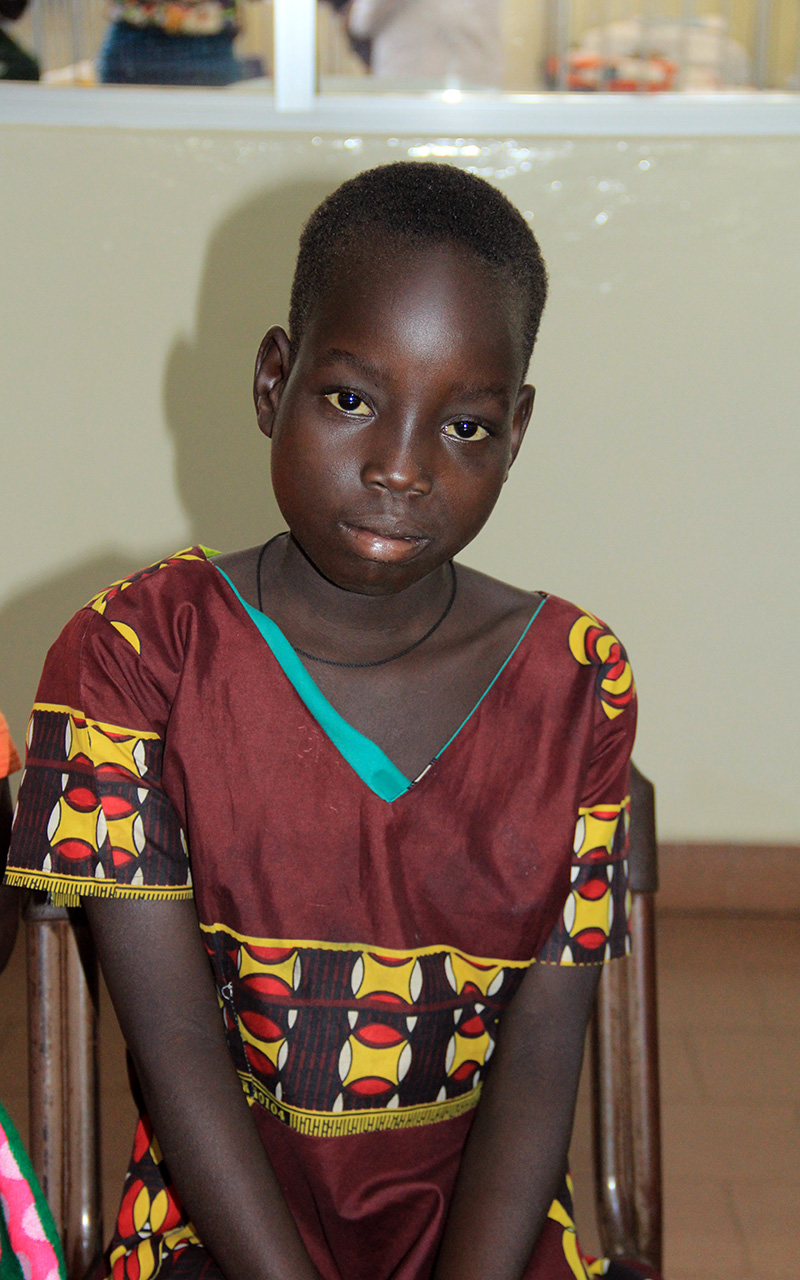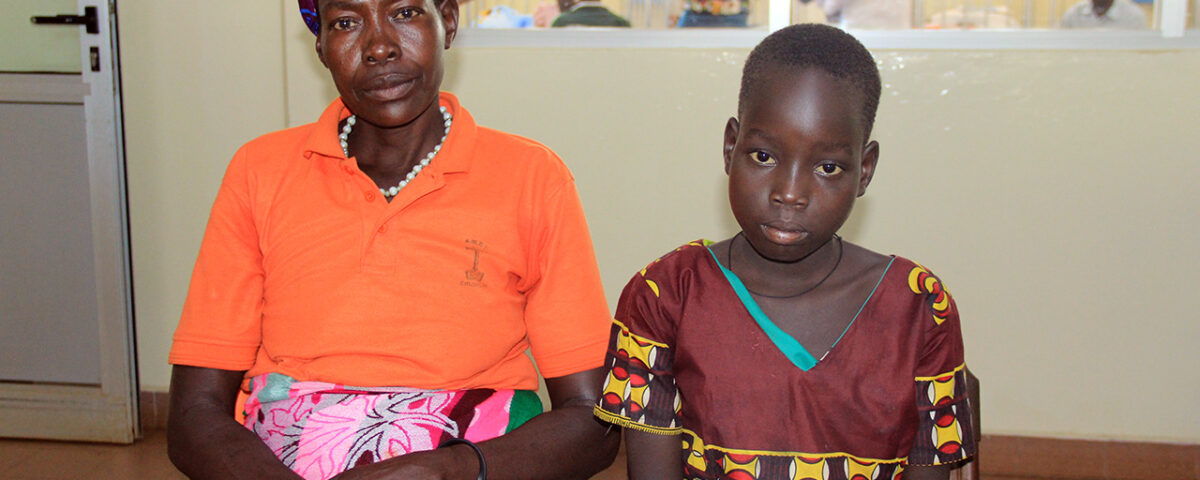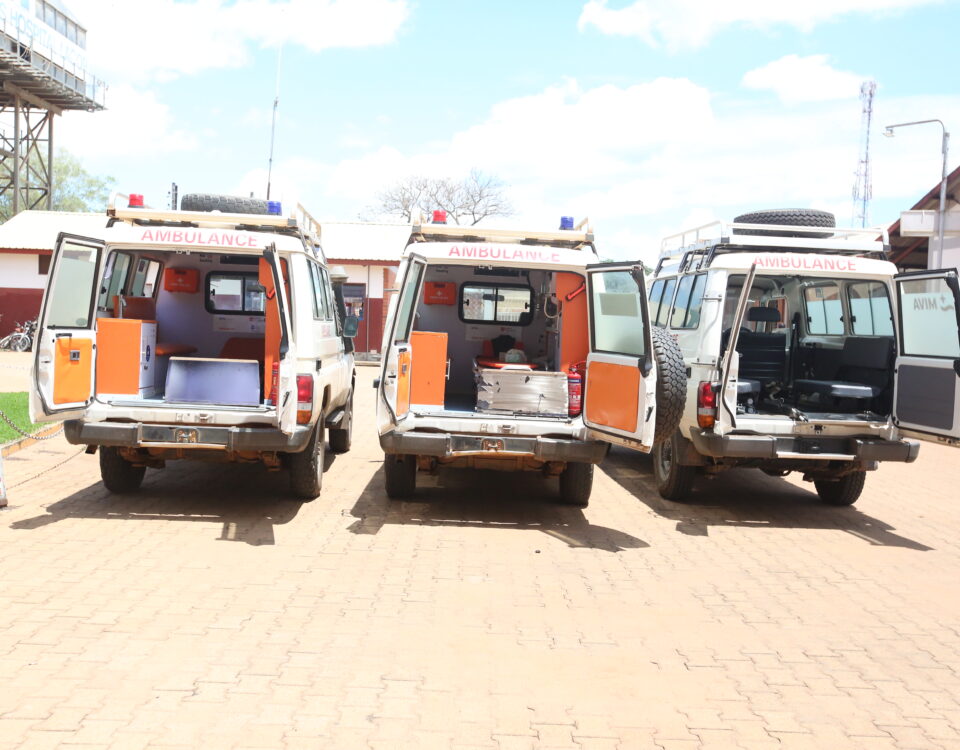A silent but relentless battle rages on within the microscopic realm of the human body. A genetic anomaly unleashes chaos within the intricate network of veins and arteries.
Sickle Cell Disease (SCD) is a genetic disorder that affects the red blood cells. It is inherited when a child receives two sickle cell genes, one from each parent. Red blood cells are round and flexible, but in individuals with sickle cell disease, their red blood cells become rigid and take on a sickle shape. The abnormal cells can block blood flow, causing pain, organ damage, and other complications.
Lamara Sharon is a ten-year-old girl whose smile lights up a room, but behind her infectious smile lies a battle that no one can see. Lamara is a sickle cell patient – a warrior facing the daily challenges of living with a condition that test her resilience all the time.
She is the seventh and last born of Aber Teresa and Banya from Agwayugi in Parabongo, Amuru district.
Of the two boys and five girls, Lamara is the only affected child of her parents. Her case first presented with a high fever and inconsolable cry when she was just three months old. That was the time they rushed back to Lacor Hospital for the second time after a normal birth as the mother narrates.
 Lamara had punctuated monthly episodes of pain that would require immediate medical attention and they would rush her to Lacor Hospital. For many years her parents sought answers that never seemed to be found. Not just answers to what could be happening with their daughter but also answers to where they would find the financial support to facilitate the monthly hospital visits.
Lamara had punctuated monthly episodes of pain that would require immediate medical attention and they would rush her to Lacor Hospital. For many years her parents sought answers that never seemed to be found. Not just answers to what could be happening with their daughter but also answers to where they would find the financial support to facilitate the monthly hospital visits.
“I have spent everything I have on this child. We’re in the hospital every month. From Agwayugi to Lacor, we spend 12,000shs, which is so difficult to get because I am just a peasant,” Lamara’s mother said. She says the condition of the child has drained her financially because of the monthly visits to the hospital which makes it really hard.
But the most important question of all was who would continue donating blood to Lamara since the father who is the sole donor cannot donate every month. Doctors require a recovery period of at least 3-6 months. Each crisis for the little girl requires 2-3 units of blood.
“Sometimes we beg fellow parents and attendants who have brought their children to the hospital to donate and we pay them with foodstuffs such as beans,” Aber said. Sometimes, they have to negotiate with people from home to come and donate blood in exchange for these food items.
The questions kept coming until one day when Dr. Martha recognized the familiar pattern of sickle cell and wasted no time in ordering a confirmatory test which came out positive.
Lamara’s parents grappled with mixed feelings of relief and sorrow – their hearts feared for the challenges ahead while at the same time, a glimmer of hope for treatment lingers with supportive care and a newfound sense of community among those who shared Sharon’s journey.
The gentle touch of nurses like Sr. Flona Ayot and the reassuring words of doctors like Dr. Martha, Dr. Bridget Asaba, and the like started a journey toward relief. Lamara found comfort in their unwavering support.
Dr. Asaba emphasised routine up-to-date medical checkups and adherence to drugs. She appreciates Lamara’s mother for all the efforts in ensuring that her daughter gets better and encourages good nutrition especially foods reached in iron and good hydration, and that she should be taught danger signs.
Dr. Asaba also confirmed that after introducing Lamara to Hydroxyurea – an antimetabolite drug used to treat sickle cell anemia by helping to prevent the formation of sickle-shaped red blood cells – the frequencies of attacks have gone down and that she is more stable now.
We caught up with Lamara and her mother on the day they were discharged. The last episode of attack before these was three months ago.
Lamara nurtures a dream of being a teacher even though her condition has kept her away from school for the past seven years. Her mother said she would put her back to school to continue with her studies.
She went on to say that the love and care shown to her daughter meant the world to her because at some point in time, she thought she was alone but no, every encounter had warriors with stethoscopes and angel nurses in smiles fighting alongside her.
Through the pain and uncertainty, Lamara found herself wearing her heart on her sleeve with appreciation to the hospital, not just as a place of treatment, but as a sanctuary of healing for both body and soul. It is where she learned to find beauty and comfort amid adversity and strength in the face of her struggle.
This year’s World Sickle Cell Day 2024 is being observed under the theme “Hope Through Progress: Advancing Sickle Cell Care Globally.” Lacor Hospital is a Center for Excellence in delivering quality and affordable care to people living with sickle cell disease.


